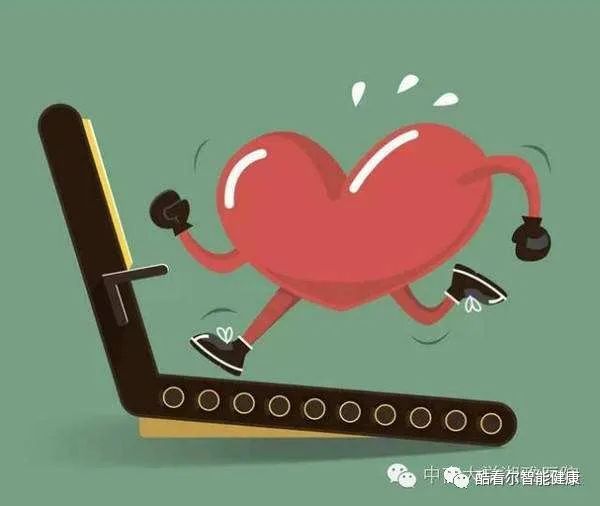Heart rehabilitation is "inseparable" from lung rehabilitation

According to China Cardiovascular Disease Report 2016, the total number of cardiovascular disease patients in China is estimated to be 290 million, becoming the most important lifestyle related disease. Cardiovascular diseases accounted for the first cause of death among urban and rural residents, with 45.01% in rural areas and 42.61% in urban areas. The burden of cardiovascular disease is increasing, which has become a major public health problem. It is urgent to strengthen the prevention and treatment of cardiovascular disease.
Heart rehabilitation came into being under this background. At present, the cardiac rehabilitation work in China is just like the trend of starting a prairie fire, and has achieved remarkable results. However, in clinical work, some patients with cardiovascular disease still have dyspnea, chest tightness and shortness of breath after drug treatment, interventional treatment and cardiac rehabilitation treatment, and they all have a certain degree of decline in pulmonary function or respiratory weakness. Targeted pulmonary rehabilitation can effectively improve symptoms and improve quality of life.
The concept of lung rehabilitation has gradually become popular
In 2013, the American Thoracic Society and the European Respiratory Society updated the concept of lung rehabilitation, that is, lung rehabilitation is a comprehensive intervention based on the comprehensive evaluation results of patients after individualized treatment. It includes but is not limited to exercise, health education and behavioral intervention, aiming to improve the physiological and psychological status of patients with chronic respiratory diseases, so as to improve their long-term compliance.
Pulmonary rehabilitation is jointly completed by multidisciplinary professional teams and should be applied to the whole course of the disease. It can be started at any stage of the disease.
In 1975, the American College of Chest Physicians first proposed the definition of lung rehabilitation, and since then, lung rehabilitation has been widely carried out in Europe and the United States. Lung rehabilitation started late in China. In 1999, Zhou Shifang, First Affiliated Hospital of Nanjing Medical University, proposed the concept of lung rehabilitation.
At present, pulmonary rehabilitation is mainly applied to chronic obstructive pulmonary disease and other chronic respiratory diseases, but has not been widely carried out in cardiovascular diseases such as cardiac insufficiency. Pulmonary rehabilitation emphasizes respiratory disorder, so as long as the patient has dyspnea, decreased exercise tolerance and limited activity, it is the indication of pulmonary rehabilitation.
Pulmonary rehabilitation is closely related to cardiovascular disease
Weber KT, a cardiologist, pointed out that "cardiologists and respiratory physicians either focus on the left ventricle or on the pulmonary alveoli. This limitation cannot properly understand and comprehensively observe the cardiopulmonary unit."
Wasserman, a respiratory pathologist, put forward that "all exercises require the coordination of cardiac and pulmonary functions, as well as the coordination of peripheral circulation and pulmonary circulation." He emphasized the concept of lung heart active muscle group and proposed the famous Wasserman gear. As the core organ that affects the oxygen supply of the body, the heart and lung should play a role together. Improving the heart function alone cannot completely solve the oxygen consumption needs of patients.
When cardiac insufficiency occurs in patients with cardiovascular disease, respiratory muscle compensatory performance such as forced respiration and accelerated respiration will occur. Respiratory muscle fatigue is one of the inducements of refractory heart failure, which can increase mortality and complicate the treatment of patients with cardiac insufficiency. If lung rehabilitation is given at this time, the patient's respiratory muscle fatigue will be significantly improved, thus relieving the symptoms.
Cardiopulmonary endurance is a comprehensive index reflecting cardiopulmonary function. A large number of studies have shown that cardiopulmonary endurance is related to the occurrence, prognosis and all-cause mortality of cardiovascular diseases. The decline of cardiopulmonary endurance is a stronger cardiovascular risk factor than smoking, hypertension, hyperlipidemia and type 2 diabetes.
The American Heart Federation suggested that cardiopulmonary endurance should be regarded as the fifth vital sign. Cardiopulmonary exercise test to evaluate cardiopulmonary endurance has been widely used in cardiopulmonary rehabilitation.
The respiratory system and cardiovascular system are interdependent and closely related in physiology and pathology. Lung rehabilitation and heart rehabilitation have a lot in common. Both of them include health education, smoking cessation, nutrition, psychological support, sports training, etc. They are non-invasive treatment methods, safe, low-cost, and highly effective.
Pulmonary rehabilitation improves the prognosis of cardiovascular disease
In the treatment of cardiovascular disease, patients are often in a serious condition, unable to tolerate active training and intense passive training, which needs to be combined with the posture management of pulmonary rehabilitation.
he body position prescription was formulated according to the analysis of factors affecting oxygen transport impairment in each patient, and was set according to the principles of therapeutic body position prescription. When the patient has phlegm and cannot cough, the airway clearance technology and active assistant cough technology in pulmonary rehabilitation should be used.

Cardiac rehabilitation and pulmonary rehabilitation should be closely combined. If the patient complained of chest tightness and shortness of breath, the symptoms were still not improved significantly after cardiac drug treatment and cardiac rehabilitation. This is related to the patient's respiratory muscle function and pulmonary function, which needs to be combined with pulmonary rehabilitation, mainly including respiratory control and respiratory muscle training. Research has confirmed that respiratory muscle training is beneficial to improve the prognosis of cardiovascular patients, especially for patients with heart failure, but the specific mechanism needs to be further studied.
"Qi is the commander of blood, and blood is the mother of Qi". The heart and lungs are inseparable. We should establish a holistic view of medicine and should not treat each organ separately. The concept of rehabilitation treatment is to fundamentally change the lifestyle, and improve the health of the whole people by preventing and treating lifestyle related chronic diseases. Proper pulmonary rehabilitation treatment in cardiac rehabilitation can improve patients' cardiopulmonary endurance, relieve symptoms, improve quality of life, reduce all-cause mortality, and reduce economic burden, which is beneficial to national chronic disease prevention and management.




